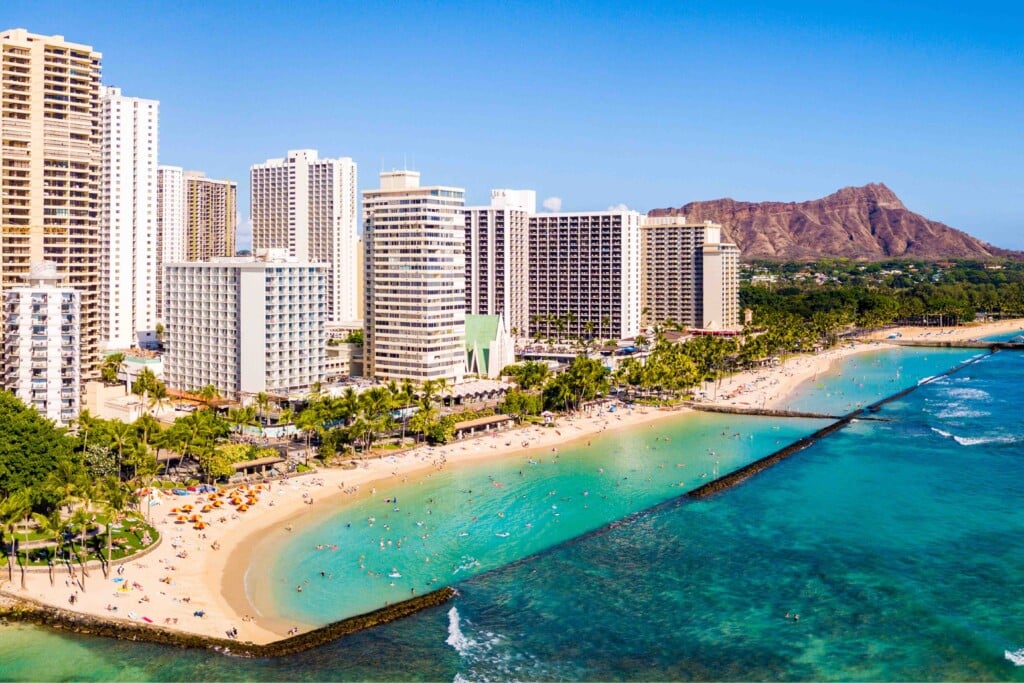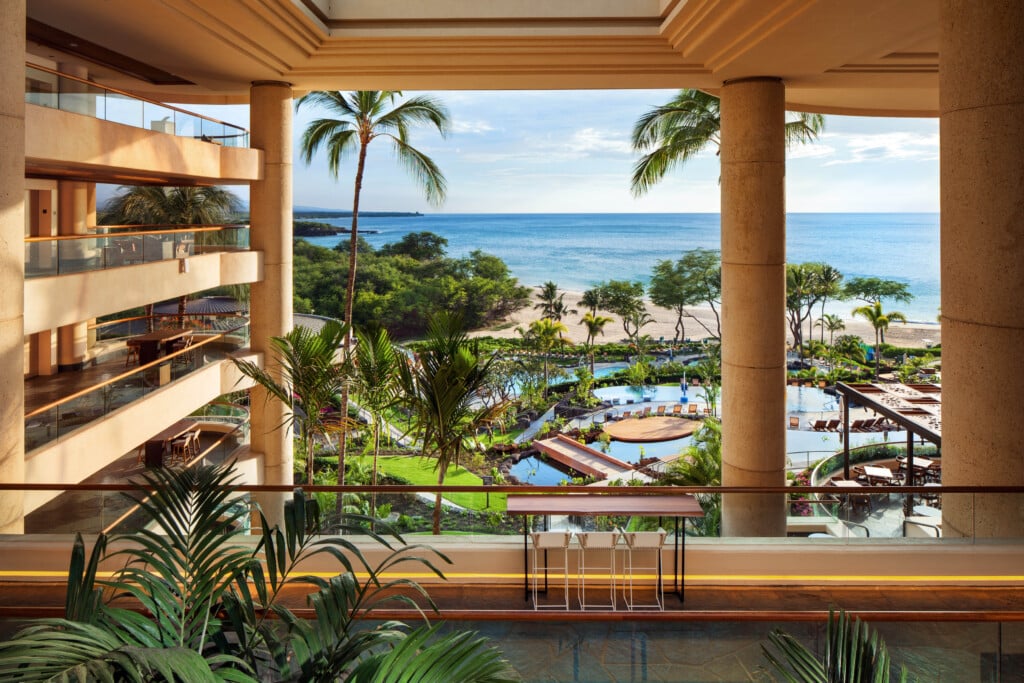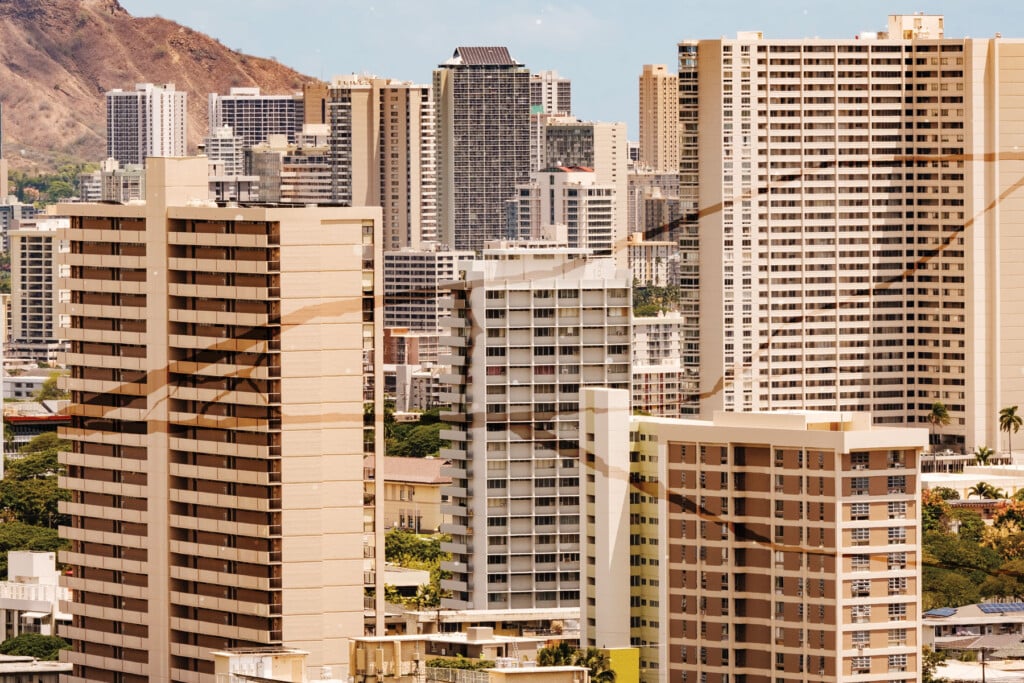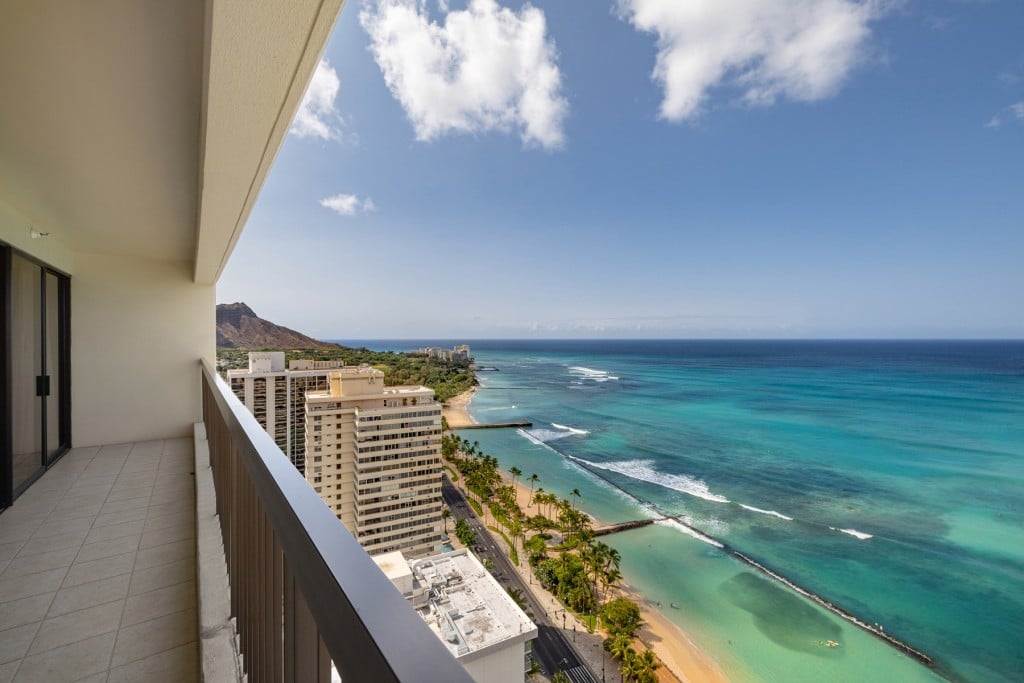Kailua seeks balance
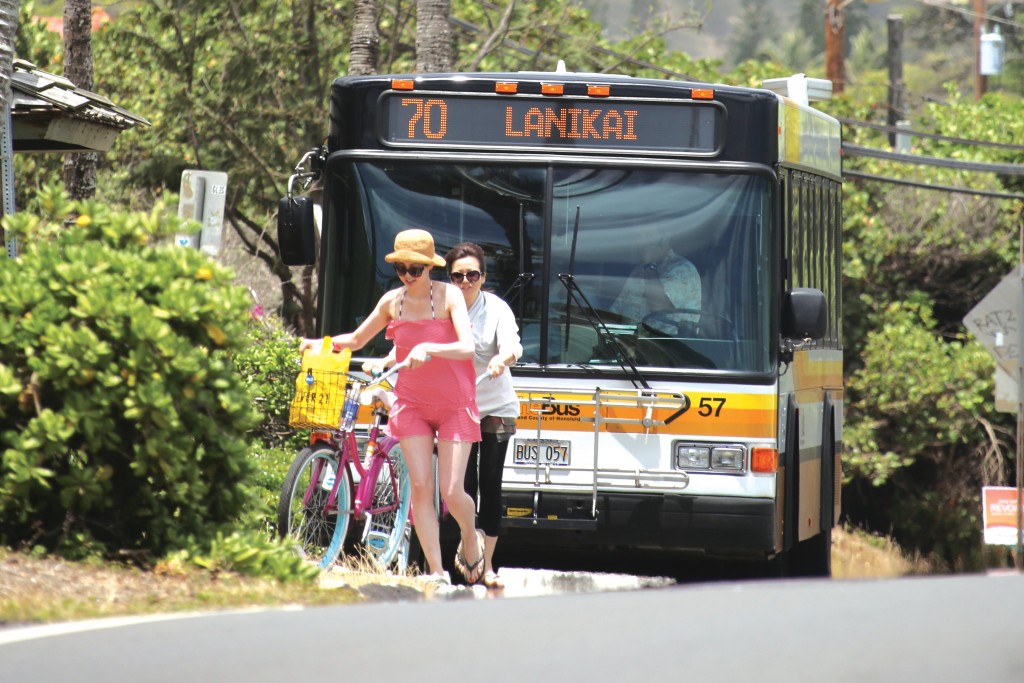
It’s a hot Thursday and state Rep. Chris Lee is sitting in traffic trying to get out of Lanikai, his home neighborhood in Kailua. It’s 2:30 p.m., and Kailua and Lanikai beaches are still full of people, but cars trying to leave the area are already backed up way past Buzz’s restaurant.
Lee is supposed to be at a meeting in Honolulu in half an hour, but he’s not going to make it on time.
“I don’t think we can limit the number of people coming into Kailua,” he says, “but I think you can manage how those people come into the community and where they’re going to be, to mitigate the impact on any one neighborhood.
“We’re a welcoming town, and our challenge is to make sure that the needs of our residents continue to be met and aren’t overlooked because of an increasing focus on tourism. Finding that balance is key.”
Balance is the word many people use these days in response to the tourism and development boom as visitors and Oahu residents flock to Kailua, a once sleepy suburb by the sea. The problem is: Different people have different visions of balance.
Stores, tour operators and rental businesses are flourishing and hiring more people, but many long-time residents see their laid-back lifestyle dying, with some saying tensions are close to a “boiling point.”
At peak time on a busy weekend, it can take an hour or more to drive the two miles out of Lanikai. Judy Bishop, who runs a recruiting and staffing agency, says she tries not to go to the beach or even leave her Lanikai house on weekends because of the crowds and traffic.
“The sheer volume of local people and tourists is overwhelming the infrastructure of Kailua,” Bishop says. “We love to have visitors, tourists, people from Aiea or Pearl City or Kahaluu, come to our beaches because these are very popular with residents. … But we can’t fit a busload of tourists in there. We’re being overwhelmed. The parking area, the little bridge, the narrow roads, it wasn’t designed for tour buses.”
There are other friction points:
- The long-standing dispute over illegal bed-and-breakfast facilities and short-term home rentals that cater to tourists eager to see “the real Hawaii,” and upset neighbors and unsettle communities of long-time residents.
- The construction of big-box stores, Whole Foods Market, which opened in April, and Target, scheduled to open next year.
- D.R. Horton-Schuler’s development of 153 condominiums in six four-story complexes on Kailua Road, which eliminated rundown but affordable apartments for low-income people.
- The emotional debate over state Senate Bill 2927, which would have eliminated planning, zoning, height and environmental oversight around rail and bus-transit stations around Oahu, including Kailua. The bill died in the Legislature, but it may be revived next session;
- The proliferation of rented kayaks, paddleboards and other watercraft on the beaches, in the water and on the offshore islands that serve as bird sanctuaries.
- For years, private landowners allowed hikers to cross their property to reach the trail to the World War II pillboxes above Lanikai, but the owners now chafe as the number of climbers has grown exponentially, seriously increasing erosion.
There are many themes to the competing interests: jobs, revenue and profit versus oceanside lifestyles and traditions; newcomers versus oldtimers; traditional stores versus unconventional entrepreneurs plying their wares from front yards or the beach; beautification and development versus preservation and Kailua for Kailuans.
“There’s no one who will tell you Kailua isn’t prettier, with the new storefronts, the shady median and the upgraded shops like Whole Foods,” says one resident. “But some wonder: ‘At what price?’ ”
Mitch D’Olier says one person is largely responsible for bringing all those extra tourists to Kailua. “I am absolutely convinced it’s the Obama effect,” says D’Olier, president and CEO ofKaneohe Ranch, which has recently redeveloped 15 of the 40 acres it owns in the heart of Kailua.
“The tour bus people say, ‘We’re no longer selling a Haleiwa tour, we’re selling a Kailua tour. It’s closer (to Waikiki), and the second thing is Obama-san,’” D’Olier says.
“This is where the president comes when he comes home. They want to eat shave ice where he eats shave ice, and they want to walk on the beach where they’ve seen him walking with his daughters. He’s an iconic figure who has been very good for Kailua at exactly the time we needed something. We were heading for recession and I was worried we were going to lose merchants.
“But,” he continues, “we need to manage the traffic better and we need to manage the recreational places better. And we need to enforce whatever rules are there. When people can’t get out of Lanikai, when traffic doesn’t work, no, that’s not what we see for Kailua.”
Bus companies wanted to drop off tourists at the district park, he says, but he told them that would be a “nightmare” and create a community backlash. Instead, Kaneohe Ranch provided space on Hekili Street for tour buses and opened up the 135 stalls on the second floor of the parking garage beside Longs Drugs, for extra cars drawn by the opening of Whole Foods.
Many smaller businesses that cater to both tourists and locals are thriving: Boots & Kimo’s Homestyle Kitchen has a constant lineup for breakfast and lunch; Pablo Gonzalez gets an overflow crowd daily at Lanikai Juice; and James Kodama’s Island Snow may be the biggest single beneficiary of the Obama effect. The president and the first family have bought Kodama’s shave ice during every Christmas vacation for the past four years, and that translates into national and international media coverage for Island Snow.
“The Obama thing for Kailua has definitely made a difference for all businesses in Kailua,” says Kodama, who owns the Island Snow shop, but has turned operations over to his son, Brockton.
When he was growing up in Kailua, Kodama says, “Stores really couldn’t survive here.” He welcomes the changes to what he remembers as a dull and sluggish town where he had trouble finding even part-time work as a teenager.
“It’s been a hidden jewel, but it’s no longer hidden,” he says. “When the Japanese people come in, they’re appreciating exactly what you and I appreciate.”
But Chuck Prentiss says the balance has been lost. Prentiss is president of the Kailua Neighborhood Board, which supports a more tranquil windward lifestyle and wants kayak rentals banned from Kailua beaches.
“Kailua and Kalama beach parks are public recreational properties, not commercial shopping centers,” he told the City Council in a hearing on Bill 11, CD1, which would prohibit commercial activities at those beach parks. “In fact, they are zoned P-2 Preservation. Furthermore they are located in an area that you have designated as a residential community on the Oahu General Plan and the Koolaupoko Sustainable Communities Plan. … The General Plan designates other parts of the island as resort destinations where regulated commercial beach activities are permitted. … Let’s not make a mockery out of our strategic planning process.”
Prentiss said passage of the bill would not force anyone out of business. “Anyone can have a kayak rental business that is conducted from a commercial property in Kailua, which rents to locals or visitors, who can take the kayak to the beach. But for them to use scarce beach space for constant delivery and pickup of hundreds of kayaks every day, conduct lessons for kite boards, paddle boards, surfboards, etc., is totally incompatible and inappropriate outside of designated resort-destination areas.”
A vote on the bill was delayed when the city’s attorney advised the City Council that it was overstepping its powers by regulating commercial activities at the parks. Meanwhile, city Parks and Recreation director Gary Cabato says he is drafting park rules that may include a limited number of permits for rentals.
That’s what Bob Twogood hopes for. Twogood, who has spent three decades renting kayaks, says a complete ban would put at least three companies in Kailua out of business. He suggests a “reasonable permitting” system that allows the four store-based rental companies now operating to deliver kayaks next to Kaelepulu Stream, next to the bridge and across from Buzz’s.
“That keeps our delivery vehicles out of the beach parks,” he says, “and that gives the new kayakers a nice, safe place to learn to control the boat.” Then, he says, they can paddle to the mouth of the stream, drag the kayak across the sand and launch in the ocean.
Twogood says the city recently banned commercial activity in the beach parks from 1 p.m. Saturdays to 6 a.m. Mondays. So, the state will require businesses to buy permits for their kayaks, so that the companies pay $5 each time one of their kayaks lands on an offshore wildlife sanctuary like Mokulua, the twin islands off Lanikai that are nicknamed the Mokes. Lee says the money will be used to protect endangered species and the fragile ecosystems.
Mainlanders, Japanese and other foreigners are not the only visitors to Kailua. Many residents from other parts of Oahu are driving over the Pali or along H-3 to try the restaurants, browse in the shops or hold a family picnic at the beach. But, for many Kailua storeowners, it’s the tourists who keep the lights on.
At Elvin’s Bakery, Richard Wong has watched his sister’s business grow during its six years in operation. “Kailua is a nice town,” Wong says. He especially enjoys the growing number of Japanese tourists, who are particularly fond of the bakery’s blueberry scones.
“Kailua is really becoming a shopping destination,” agrees Kerrie Inouye, manager of theFighting Eel boutique, which opened in December. “It’s amazing, the rate of growth and the number of people who are shopping. … I’m in absolute heaven here. We have a very loyal clientele, plus the Japanese magazines have a straight Kailua section. And the Japanese tourists want omiyage, so there is a lot of shopping.”
Fighting Eel, a locally owned women’s clothing company, moved into a building fronted by Whole Foods as part of Kaneohe Ranch’s pedestrian-friendly redevelopment of Kailua. The new shops are built with attractive storefronts next to the street, and parking is in the rear.
Kaneohe Ranch also plans to extend the pedestrian-friendly district by selling to the state a 6-acre-hillside parcel parallel to Hamakua Drive. The area, which would be called the Hamakua Nature Walk, would be zoned conservation in perpetuity, include pedestrian walkways on each side of Hamakua Marsh and feature a walkway to the hilltop.
“It provides another place for our community to be healthy,” D’Olier says.
When the Target store opens next year, he says, Kaneohe Ranch and Target will do more traffic studies. D’Olier envisions a traffic signal at the corner of Hekili and Hahani streets, at Target’s main entrance, coordinated with nearby stoplights to create a smooth traffic flow in and out. He’d also like a traffic solution next to Kalapawai Market that eases left turns for people leaving the beach park and Lanikai area, and thereby reduces backups.
“It’s in nobody’s interests for traffic to come to a grinding halt,” he says. “If it comes to a grinding halt, it’s bad for all our merchants.”
Some long-time residents say the boost to Kailua’s economy is worth the extra bodies, while acknowledging that locals have to make accommodations, such as getting to the beach early and knowing when to leave.
“It doesn’t really bother us,” says landscaper Brandon Roper.
“Living in Kailua, we know what a beautiful place we live in,” says his friend, fellow landscaper Chris Canario. “We cannot be selfish. We gotta share.”
Still, there are limits and they both say they don’t want their hometown to ever look like Waikiki. “One time I counted 150 kayaks on the Mokes,” Roper recalls with exasperation.
From Annoying to Dangerous
Randy Cates, who runs a marine salvage business, remembers a popular Kailua canoe regatta a few years ago when the races were interrupted four times because visitors in kayaks paddled into the way of oncoming Hawaiian canoes.
“I was sitting with an old-time paddler, Cappy Vickery, one of my dad’s paddling buddies, and he said, ‘How is it that we have a Hawaiian sport that had to have a permit, being stopped by kayak companies that don’t have permits?’ ”
Sometimes encounters with tourists are more dangerous. Many residents have stories of helping tourists who couldn’t control their kayaks in Kailua’s normal conditions, who capsized or were drifting out to sea. Some swimmers have even been banged by wayward kayaks.
Kailua Bay’s popularity with locals and visitors means there are frequent offshore rescues. However, when rescuers or ambulances have to drive in and out of Lanikai and Kailua Beach Park on busy days, they have to navigate narrow streets lined with cars – many parked illegally – or jammed with traffic.
Capt. Terry Seelig, spokesman for the Honolulu Fire Department, says not all incidents are recorded, so comprehensive numbers are not available. However, he believes the number of rescues in Kailua has remained relatively stable over the past two years. For the 13 months from March 2011 through March 2012, records indicate 28 active “ocean rescue responses” in Kailua Bay and Lanikai, averaging more than two a month. These include boaters and kayakers in distress, and various other calls. There were 56 other dispatches to the Kailua Bay area, which included medical calls and others. Those rescued include both locals and tourists.
He acknowledged that there are many calls that don’t make it into the HFD logs, including rescues and assistance by county lifeguards, by officers of the state Department of Land and Natural Resources and by private citizens.
Seelig, who grew up in Kailua and on its beach, sees the increased competition for beach and trail access in Kailua. “It’s just a pressure-cooker situation,” he says. “It used to be more relaxed, but it’s changed.”
Kailua Landlord’s Master Plan
Mitch D’Olier, president and CEO of Kaneohe Ranch, Kailua’s largest landowner, says major changes in the commercial part of Kailua date back to 2004, when leases on about 15 acres of the company’s land came up for renewal.
“Driving everything in Kailua was getting all these buildings back,” says D’Olier, who joined the company as its top manager around the same time.
“We had to decide what the right thing to do is and how do we position ourselves for the next 50 years.”
Kaneohe Ranch began with a community survey that year – getting back 3,000 mailed-in replies – and then scheduling several community meetings to gather additional sentiment. He says residents indicated they wanted a movie theater, and wanted to shop in Kailua, but didn’t want a Costco, Kmart or Walmart.
“A lot of them said they don’t want to leave Kailua, like ever,” he says. They also wanted the town to be pedestrian friendly and reflect a Hawaiian heritage. That’s why the ranch stages regular dance and music events next to Longs, in the same spot as the Thursday evening farmers market.
He says Kaneohe Ranch is picky about who gets leases in the renovated buildings. Guided by the community survey, the ranch chose Target and Whole Foods, and a series of small shops, such as Fighting Eel, whose designs are popular with younger women.
“We’re trying to create the coolest little place in Hawaii,” says D’Olier. “We’re trying to look for merchandise that would allow Kailua residents to never leave. And then there are judgment calls. There are things we do not think are appropriate. No Walmart, Kmart or Costco. There are a bunch of (Kailua) ladies who talk to me all the time about what they want. We have made choices that way.”
